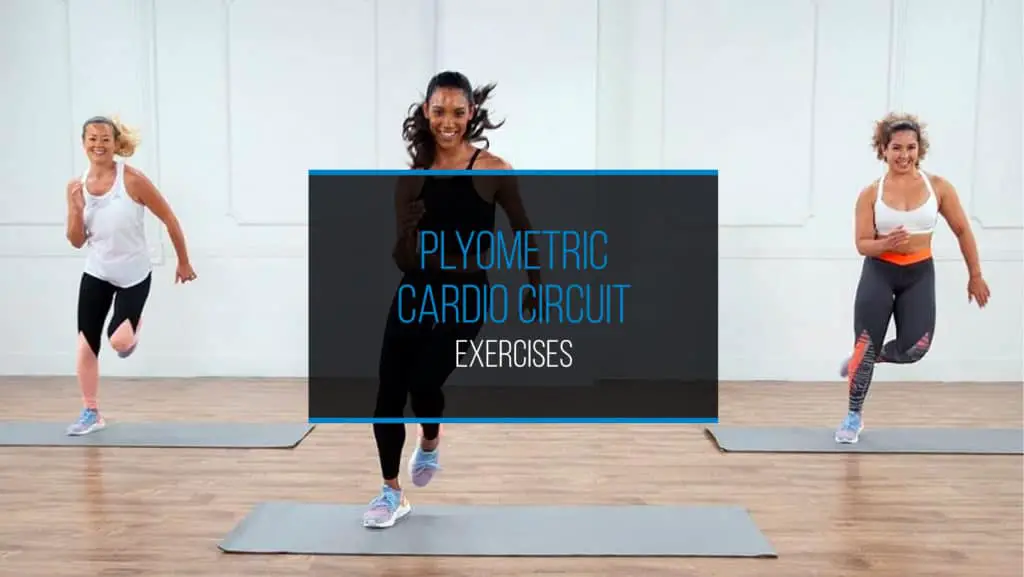here is a lot more to plyometrics than just box jumping. But what is plyometrics, and how do you do them?
Plyometrics exercises are cardio workouts that use the maximum force and strength that your muscles can use in a short amount of time. Here are some simple examples of plyometric exercises:
- Broad jumps
- Jump Squats
- Clapping push-ups
- Vertical Jumps
- Kicking
- Throwing
- Single-leg hops
- Jump Rope
When you want to do a plyometric workout, you need to make one or find one online. A plyometric circuit is a group of plyometric exercises you will need to do one after another. A complete plyometric circuit will take anywhere from 30 to 45 minutes and includes a 10-minute warm-up to get your heart rate up.
This article will tell you what plyometrics are and give you some of the benefits of doing a plyometric circuit. Furthermore, we will give you an example of two plyometric circuits, one beginner and one advanced circuit.
What Are Plyometrics?
Plyometrics describes any exercise that uses short, fast, and explosive movements that make your muscles stretch to their fullest then quickly fully contract. Plyometric exercises allow your muscles to generate the most amount of force they are capable of in the shortest period of time. Doing so will build strength, speed, and flexibility.
While strength training uses free weights and focuses on strengthening your muscles and neurological system, plyometrics exercises focus on improving your muscles’ explosiveness. Imagine an Olympic sprinter taking off from the starting line in a race. When the sprinter kicks off their starting blocks, the explosive training from plyometrics comes into play. Conversely, having poor explosive training from plyometrics can cost you the race from the very start.
The Benefits Of Doing Plyometrics
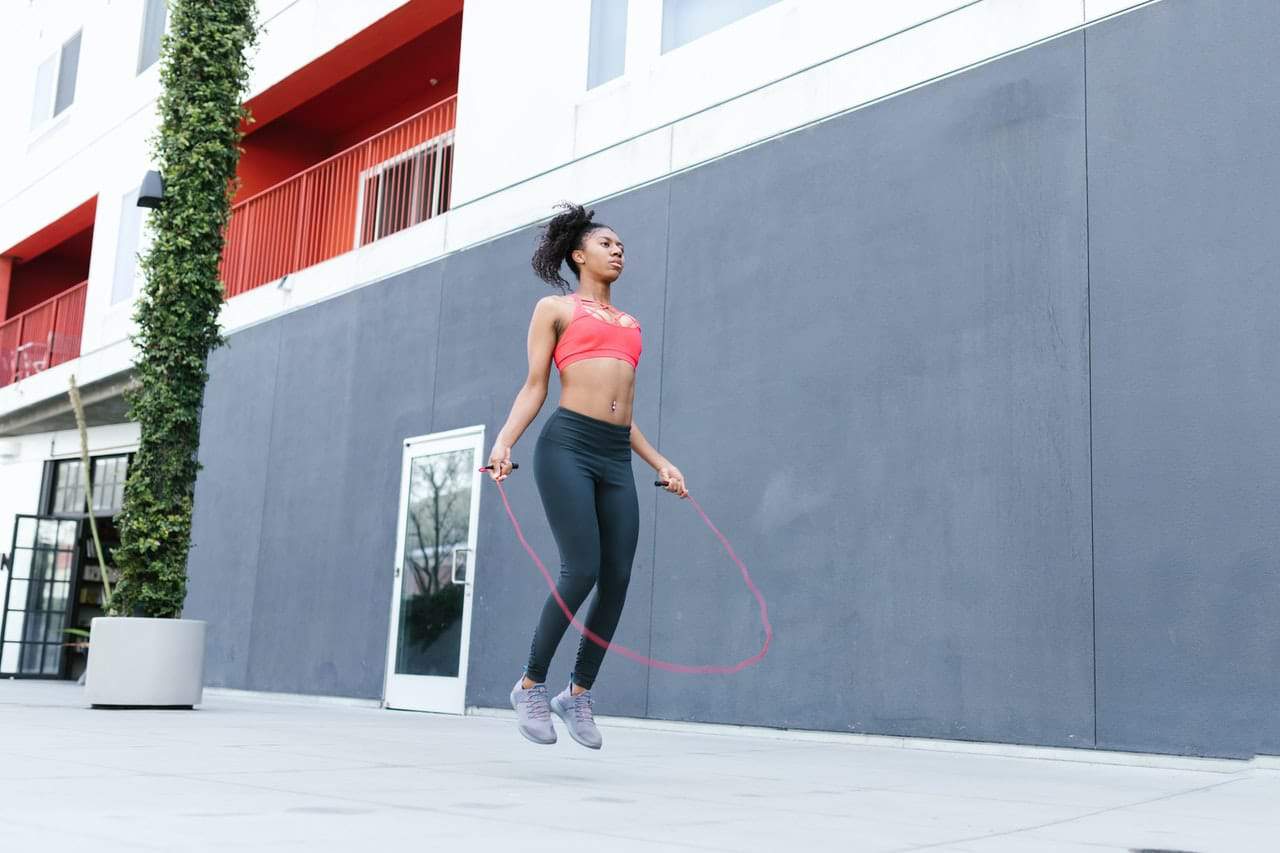
Professional athletes have been using plyometrics for decades to train their bodies. However, plyometrics have become more popular with the everyday gym-goer in recent years.
With that said, there are plenty of benefits that you can gain from doing a plyometric circuit. One of the simplest benefits of plyometrics is that they require little to no equipment, so you can do them anywhere and anytime you want. Plyometric circuits also increase muscle strength, allowing you to jump higher, run faster, and help you turn on a dime.
The core of plyometrics is known as a stretch-shortening cycle. The stretch-shortening cycle consists of two parts: concentric contraction (or contracting the muscles), followed by eccentric contractions ( or stretching the muscles). The stretch-shortening cycle provides fantastic results in regards to strength training, improving stability, balance, and agility. All of these benefits combine to allow your muscles to work quicker and more efficiently, a.k.a. Improving their explosiveness.
While plyometrics are essential for athletes, they can be used by the general public to improve general fitness and help you in your daily life. However, you must do plyometrics with proper form to gain these benefits and avoid injuries.
Things To Know Before Getting Into Plyometrics
Plyometric circuits are a very high-intensity workout that requires you to use proper form to prevent injury. You can help improve your form by doing your plyometric circuits in front of a mirror so you can observe your form and make the corrections you need. For example, when doing box jumps, observe your knees and make sure they are facing forward and are above your toes when you land.
Furthermore, plyometrics should only be done by those already in shape and who do not have injuries or chronic health concerns. Anyone with chronic health issues like high blood pressure, heart disease, diabetes, and arthritis should avoid doing plyometrics because it can lead to severe injury or worsen your condition.
You should also avoid doing plyometrics if you are pregnant. The extra weight you gain during pregnancy can cause you to lose balance while doing your plyometric circuit, which can lead you to injure yourself or your growing baby. Furthermore, the additional weight you will gain during pregnancy puts extra stress on your joints. Because plyometrics is a high-intensity exercise, you will be putting even more stress on your joints, which can lead to pain and injuries.
Always Do A Warm-up
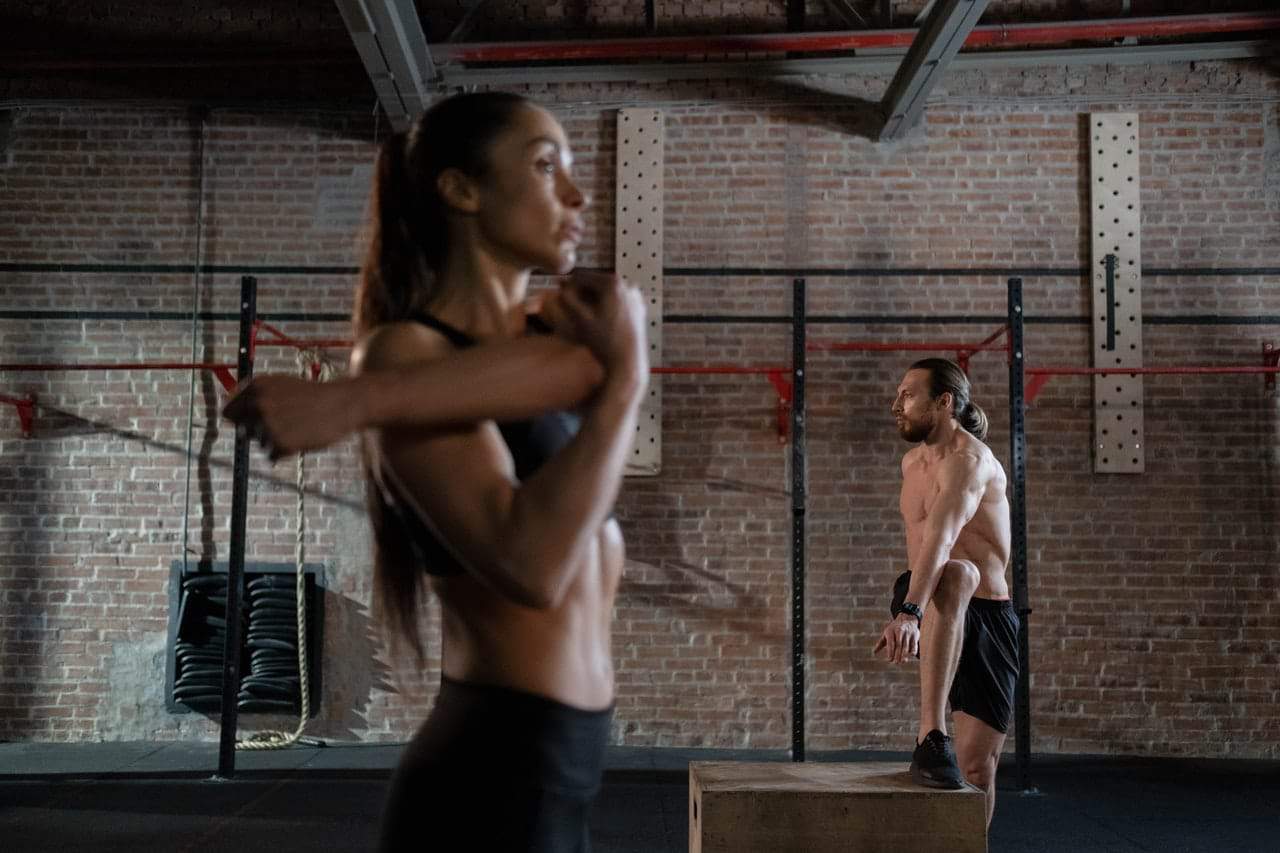
Plyometrics require stretching your muscles and joints and being fully warmed up. Stretching before any workout will help prevent injuries and can help improve blood flow during your routine. Warming up will get your blood pumping and raise your heart rate, allowing oxygen to flow faster and smoother to the rest of your body.
An example of a warm-up routine you can do before starting your plyometric circuit consists of 5 minutes of light jogging, followed by five minutes of skipping, high knees, side shuffles, and butt kicks. This warm-up will take 10 minutes and is perfect for getting your heart rate up.
Examples Of Plyometric Circuits
This section will give you two examples of plyometric circuits that we made. The first one will be for beginners, and the second is an example for those who want to take their plyometric circuits to the next level and is more of an advanced circuit.
Each of these circuits will take 30 to 45 minutes to complete and require you to stretch for 5 minutes and do a 10-minute warm-up beforehand. Within each of these circuits are individual plyometric exercises that should be done at least 15 times or for about 30 to 45 seconds before taking a 30-second rest and continuing to the next exercise.
Once you have completed the whole circuit, rest for one to two minutes before restarting the circuit. Then, do the entire circuit three to five times to complete the workout.
You can adjust the order of these exercises as you see fit. You can also remove some of these exercises if you need to make it easier. You can always add them later as you get better at plyometrics. You can add or replace some of these exercises; however, be sure that you know how to do the new exercise safely and with proper form.
Furthermore, in each of these exercises, we will give you a brief description of how to do them.
Beginner Plyometric Circuit
- Squat Thrusts
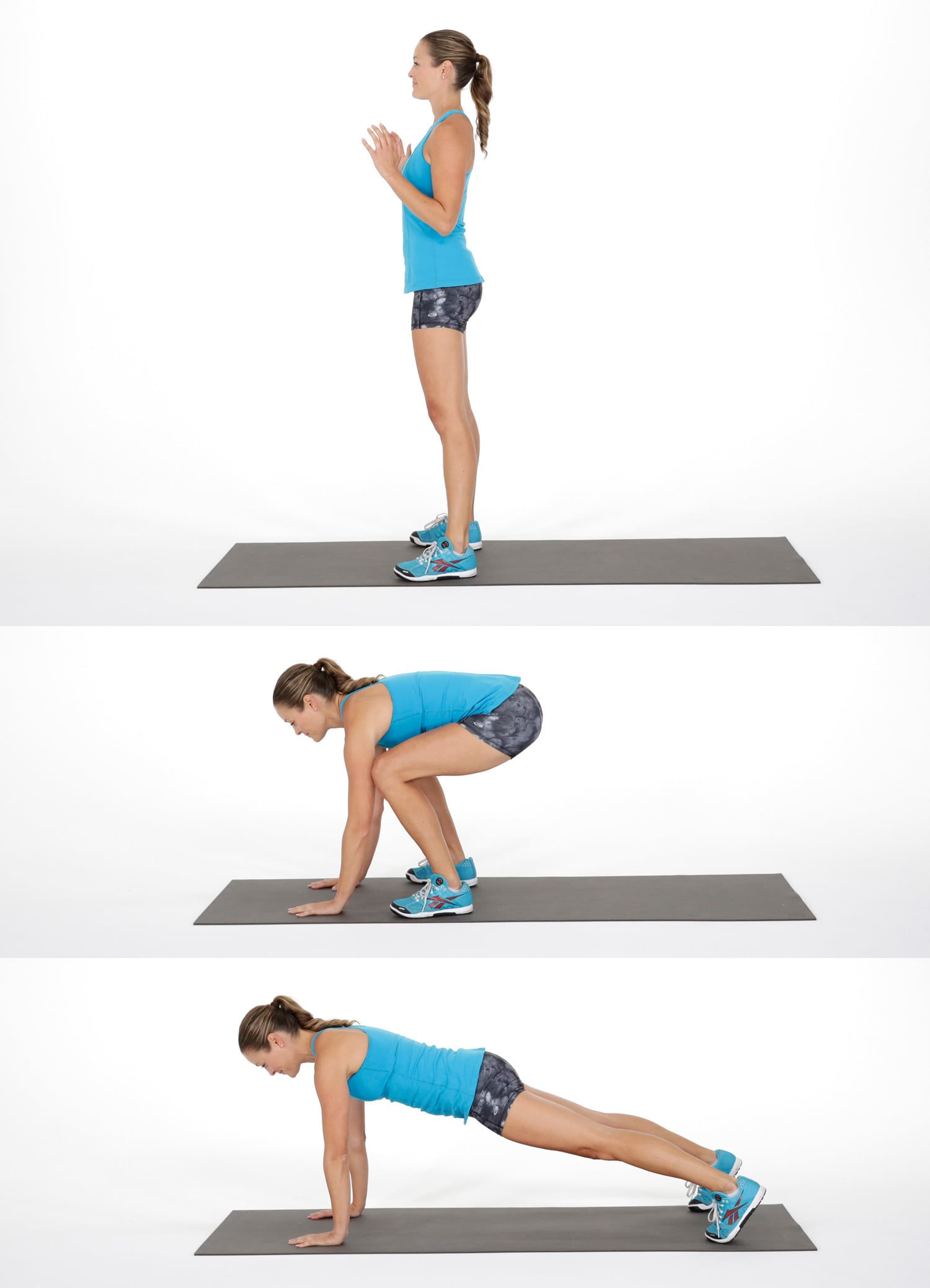
- Get into the plank position, with your palms on the floor and your arms straight
- Jump your feet forward and transition into a squat position with your arms above your head
- Stand up
- Squat back down and place your hands back onto the floor
- Jump your feet back to their original position
- Repeat in quick succession
- Lateral Bounds
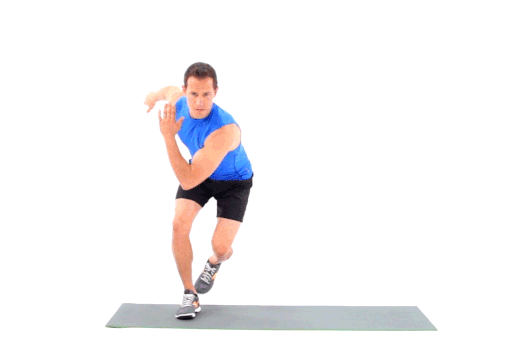
- Start in a partial squat position with your feet spread just past your hips. Keep your knees slightly bent.
- While staying in this partial squat position, use your left foot to jump to your right three to five feet.
- Land softly on your right foot while keeping your knees bent
- Stay balanced for one to two seconds on your right foot as soon as you land. Then immediately jump to the left using your right foot.
- Land softly on your left foot, keeping your knees bent
- Stay balanced on your left foot for one to two seconds.
- Landing on the foot you started with completes one rep.
- Repeat in quick succession
- Box Jumps
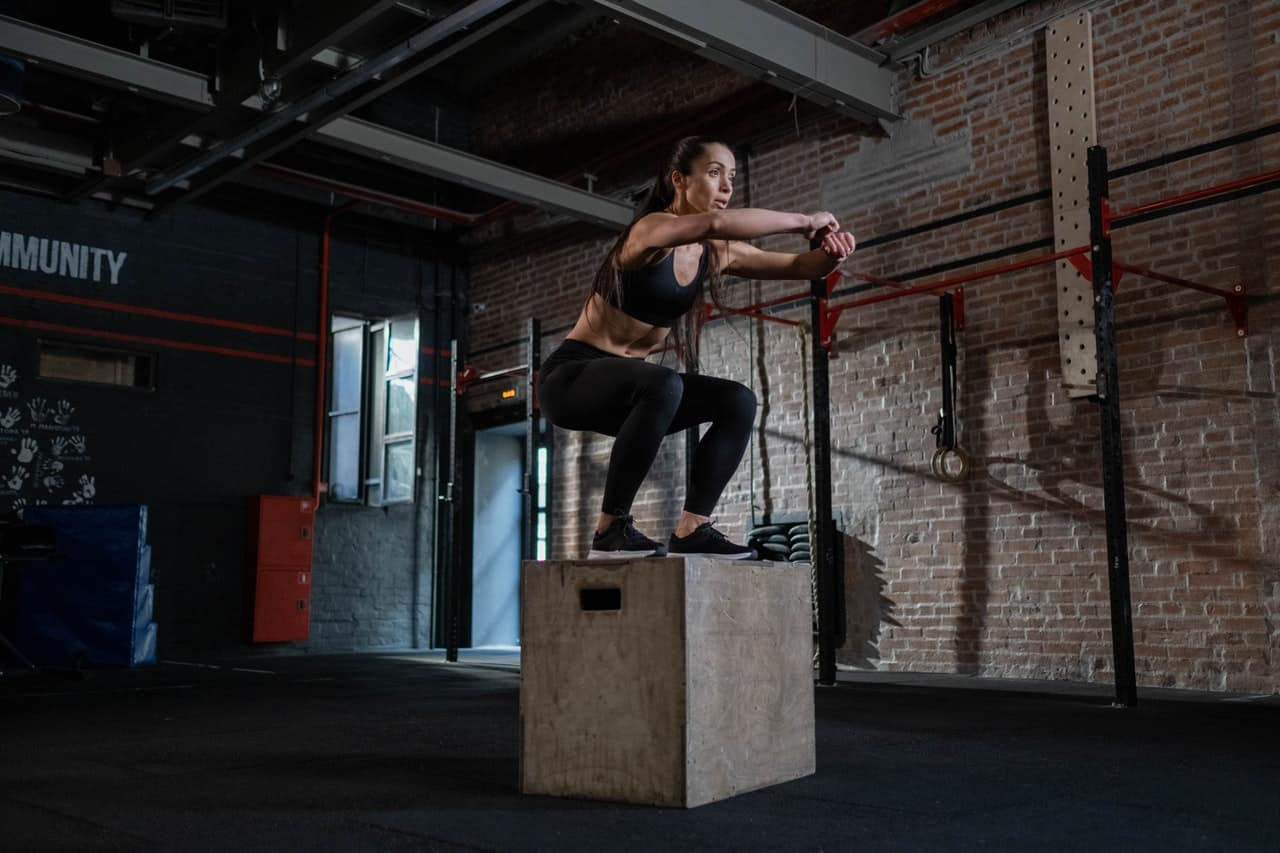
Box jumps should be done with an eight to twelve inches high box when you first start doing box jumps. After that, you can increase the height of the box as your build power and can jump higher.
- Stand with your feet just past your hips while facing your box of choice.
- Slightly bend your knees until you are almost in the squat position
- Right before you reach a full squat, engage your legs and swing your arms up to explode into your jump
- Land on the box softly with your knees slightly bent
- Step down off of your box
- Repeat in quick succession
- Clapping Push-ups
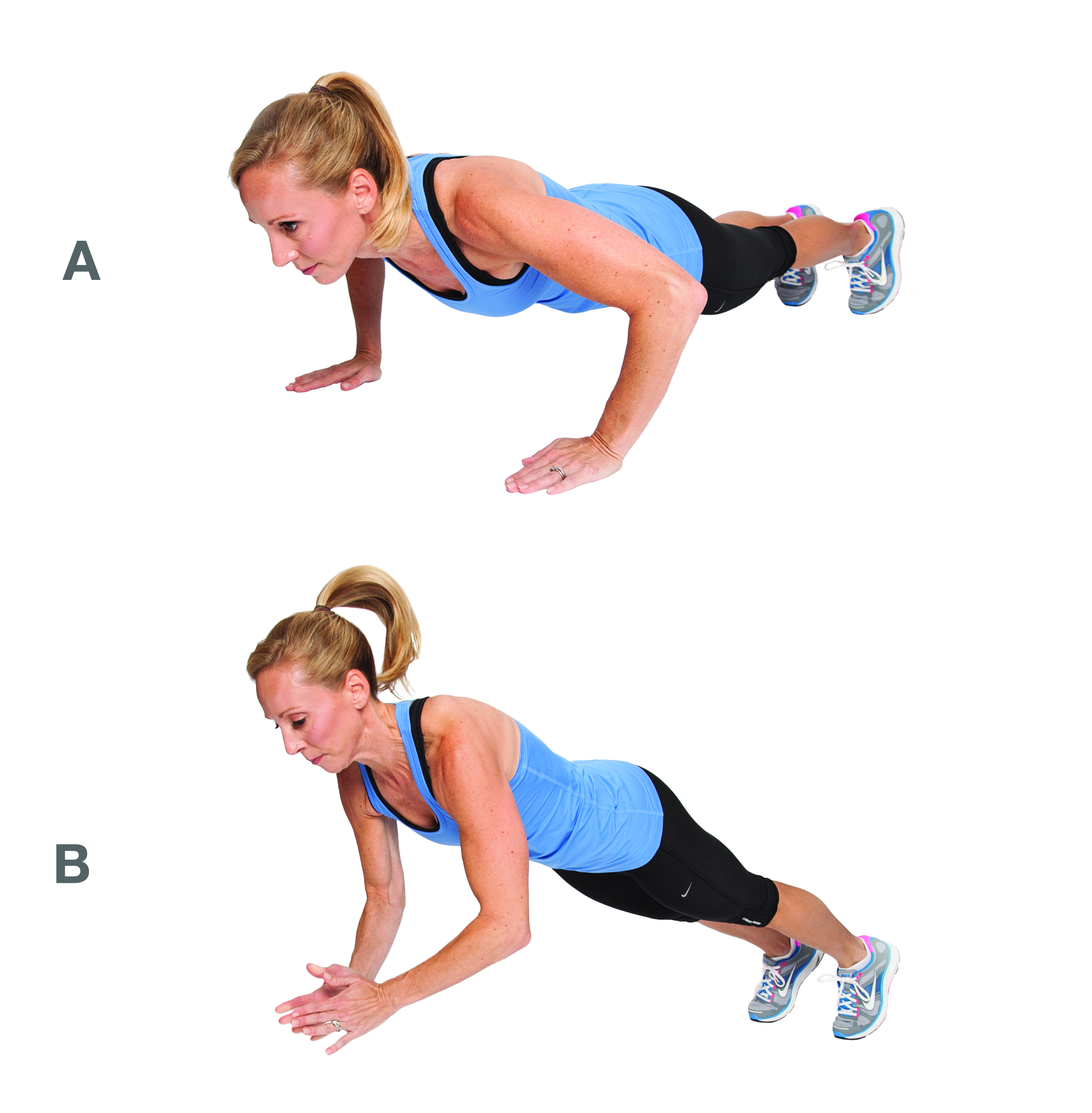
- Get into the top of the push-up position
- Bend your elbows until they go past your back
- Engage your arms to explosive push your upper body off of the floor
- CLAP
- Once you land, immediately bend your elbows until they go past your back
- Repeat in quick succession
- Split Jumps
- Start in the split stance with your left foot in front of you and your right foot behind you. Keep them three to four feet apart.
- Bend your left knee until your thigh is parallel with the floor
- Once your thigh is parallel with the floor, immediately jump and switch the positions of your legs.
- Land with your right leg in front of you and your left leg behind and with your right knee bent.
- Immediately jump and switch your legs again
- Repeat in quick succession
- Single-Leg Hops

- Stand on your right leg and bend your knee. Keep your left leg off the floor with your left knee also bent.
- Jump to the right landing on your right foot, keeping both knees bent to absorb the impact better.
- While staying on the right leg, jump left while landing on your right foot.
- Repeat for 15 reps or 30 to 45 seconds, then switch legs and repeat the exercise.
Advanced Plyometric Circuit
- Suicide Drills
- Stand on your right leg and bend your knee. Keep your left leg off the floor with your left knee also bent.
- Jump to the right landing on your right foot, keeping both knees bent to absorb the impact better.
- While staying on the right leg, jump left while landing on your right foot.
- Repeat for 15 reps or 30 to 45 seconds, then switch legs and repeat the exercise.
- Jump Squats

- Stand up straight with your feet spread just past your hips
- Lower your body into the squat position until your thighs run parallel to the floor
- Engage your legs to jump explosively as high as you can
- As you land, keep your knees slightly bent to absorb the impact better
- As soon as you land, lower back into the squat position
- Repeat in quick succession for 30 to 45 seconds
- Mountain Climbers
- Quickly run in place while raising your knees as high as you can
- While running, alternate your arms opposite of the knee that is raised and reach that arm up as if you were climbing a mountain
- Repeat in quick succession for 30 to 45 seconds
- Ski Jumps
- Stand in a partial squat position with your knees slightly bent
- Jump to your left about two feet from your starting position
- Keep your knees bent as you land
- As soon as you land, jump to the right four feet
- Once you land, jump to the left 4 feet
- While jumping and landing, swing your arms as if you were skiing
- Repeat in quick succession for 30 to 45 seconds
- Split Jumps
- Start in the split stance with your left foot in front of you and your right foot behind you. Keep them three to four feet apart.
- Bend your left knee until your thigh is parallel with the floor
- Once your thigh is parallel with the floor, immediately jump and switch the positions of your legs.
- Land with your right leg in front of you and your left leg behind and with your right knee bent.
- Immediately jump and switch your legs again.
- Repeat in quick succession for 30 to 45 seconds
- Football Sprints

- Stand with your feet shoulder-width apart and run in place for two to three seconds
- Drop to the ground so that your chest is lying on the ground
- Quickly jump back up into the starting position and continue running
- Repeat in quick succession for 30 to 45 seconds
- Lateral Bounds
- Start in a partial squat position with your feet spread just past your hips. Keep your knees slightly bent.
- While staying in this partial squat position, use your left foot to jump to your right three to five feet.
- Land softly on your right foot while keeping your knees bent
- Stay balanced for one to two seconds on your right foot as soon as you land. Then immediately jump to the left using your right foot.
- Land softly on your left foot, keeping your knees bent
- Stay balanced on your left foot for one to two seconds.
- Landing on the foot you started with completes one rep.
- Repeat in quick succession for 30 to 45 seconds
Final Thoughts
Plyometric circuits are a very intense and high-impact workout. Whether you are a beginner or looking to increase the difficulty of your circuits, plyometrics are no joke and will put you through the wringer. With that said, make sure you are already in shape and do not have any health concerns before doing plyometrics, or you will have a greater risk of injury or worsening your condition.

